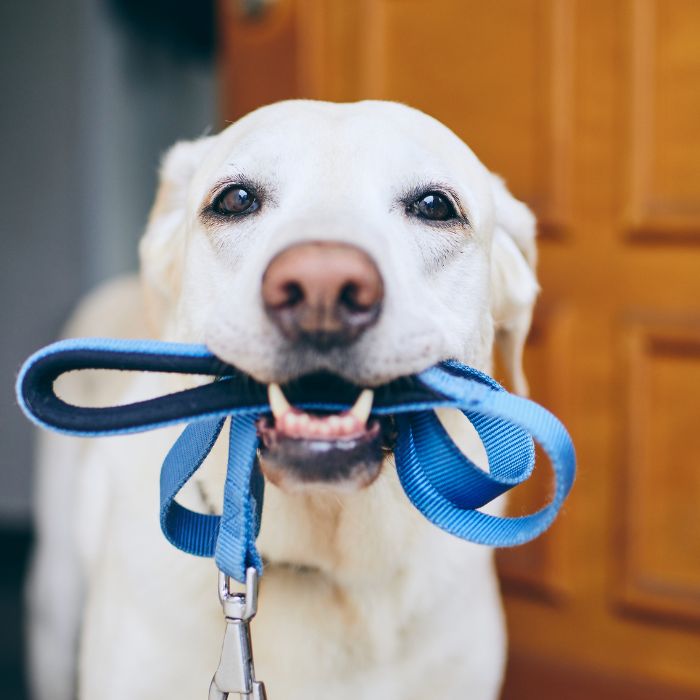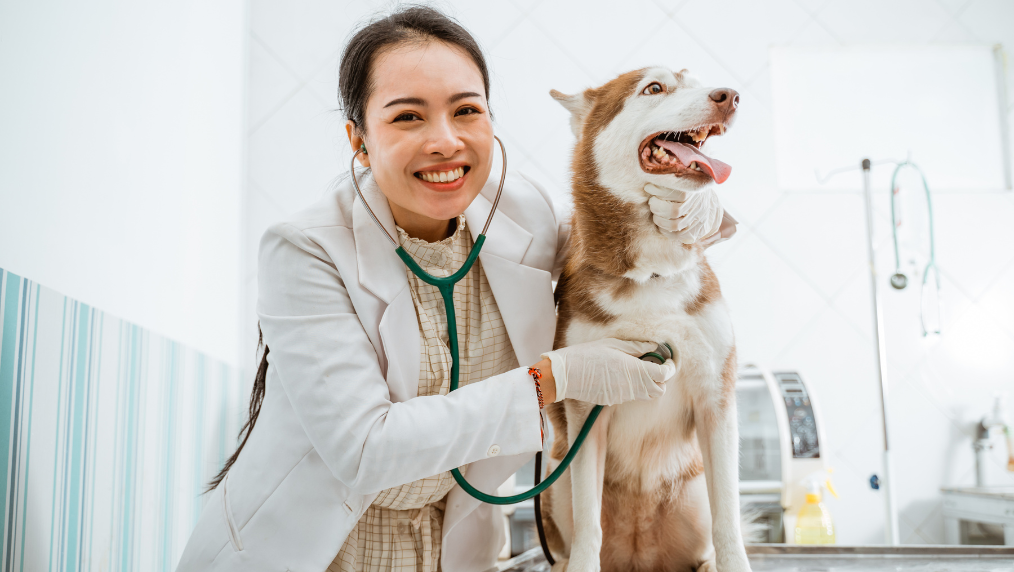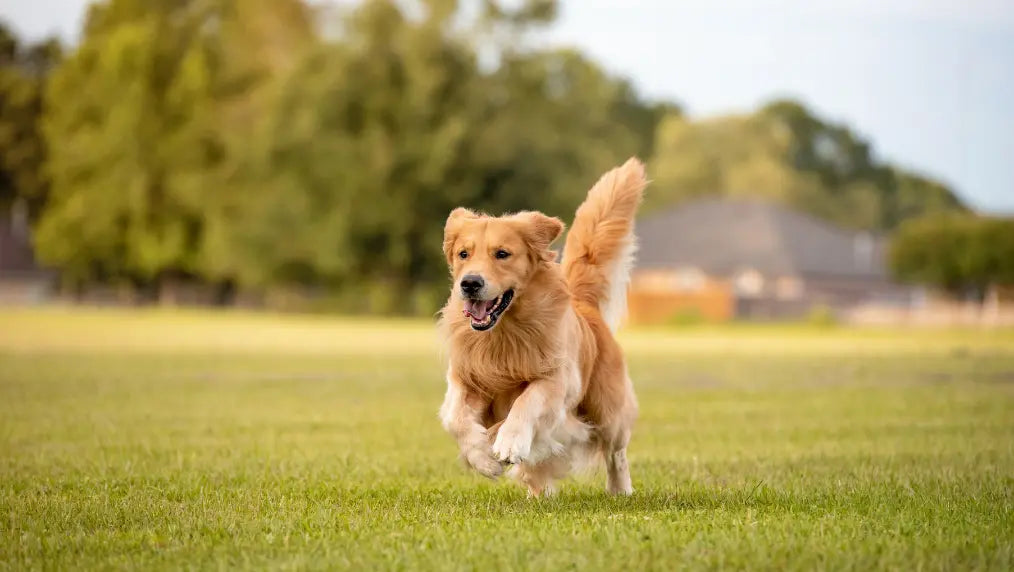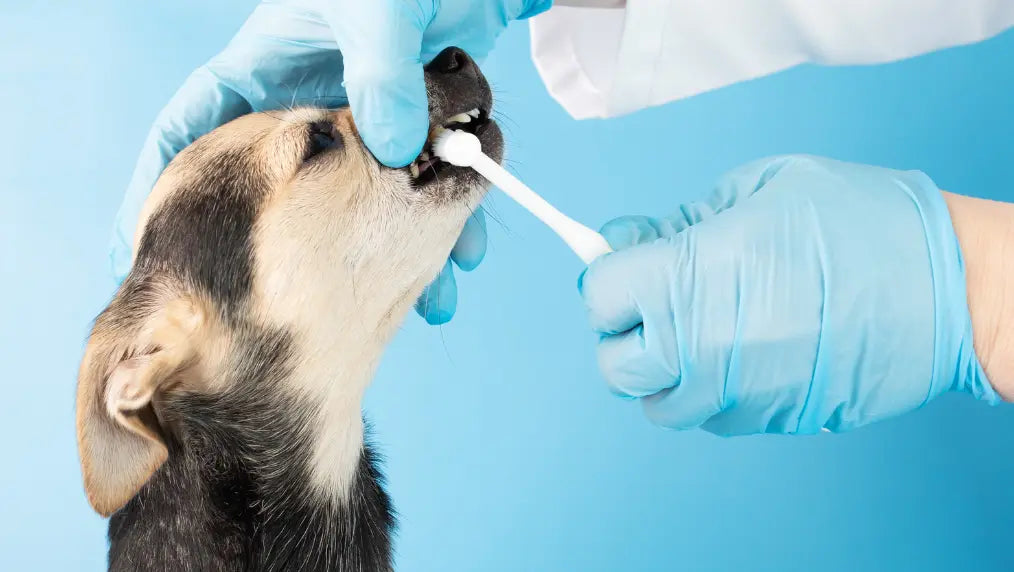Walking your furry companion is not just about exercise; it's an essential bonding activity that can strengthen your relationship and ensure a happy, well-adjusted pet. However, for many dog owners, a leisurely walk can sometimes feel more like a tug-of-war. A lot of new puppy owners (or even seasoned dog owners) do not know how to walk a dog.
In this guide, we'll provide you with comprehensive tips, tricks and dog training techniques to help you and your dog enjoy a harmonious and satisfying walking experience.
Going for a walk is the best part of your dog’s day (and hey, maybe it’s the best part of yours, too). If you’re a new pet parent, you might think dog walking is pretty simple. But the truth is, making a walk enjoyable for both you and your pup requires some foresight and training sessions. There’s a lot more training tips you need to know.

The Importance of Proper Dog Walking
Physical Exercise
Regular walks are part of standard dog ownership, and crucial for your dog's physical health. They provide an outlet for excess energy, help maintain a healthy weight, and promote cardiovascular fitness.
Mental Stimulation
A walk is not just a fun physical exercise; it's also an opportunity for mental stimulation. Dogs explore the world through their senses, and a walk offers them a plethora of new scents, sights, and sounds.
Socialization
Walking is a social activity for dogs. It exposes them to different people, animals, and environments, helping them become well-adjusted and confident in various situations.
Routine
While your dog gets used to walking with you, it’s a good idea to stick to a routine. This means walking them at the same time each day and to the same places. This will help them learn how they are expected to behave and will help them behave better when you introduce them to new walking areas. It also helps many dogs stay calm when they know where they are going.

Preparing for the Walk
Proper Equipment
-
Collar or Harness: Choose a comfortable, properly fitting collar or harness. If your dog tends to pull, consider a no-pull harness.
-
Leash: Opt for a sturdy, non-retractable leash, preferably between 4-6 feet in length.
-
ID Tag: Ensure your dog wears an identification tag with your contact information.
-
Poop Bags: Always carry waste bags to clean up after your dog.
-
Treats or Rewards: These will come in handy during training.
Training Basics
Before you even step outside, ensure your dog is familiar with learning some basic commands like 'sit', 'stay', and 'heel'. These commands will form the foundation for a well-behaved walking experience in their daily life.
When it comes to puppy walking, many people don’t realize that puppies can’t be walked very far, no matter their size. Twenty minutes is the maximum they should be out for at first. You can gradually build up to longer walks as your pup gets older and more mature.
Walking Techniques
Loose Leash Walking
1. Start in a Controlled Environment:
Begin training in a quiet, low-distraction area like your backyard. This helps your dog focus on you.
2. Use Positive Reinforcement:
Reward your dog for walking beside you and exhibiting good behavior using treats, verbal praise, and petting. Be consistent and generous with your rewards. Most dogs are food motivated so this should be an effective method of rewarding them.
3. Stop and Start:
When your dog starts to pull, stop walking. When they come back to your side, reward them and resume walking.
4. Change Directions:
To keep your dog engaged, change your direction frequently. This encourages them to pay attention to you.
5. Be Patient:
Training takes time. Stay calm, and avoid getting frustrated.

Dealing with Pulling
1. Stand Still:
When your dog starts to pull, stand still and wait for them to come back to your side. Reward them when they do.
2. Use a Gentle Leader or No-Pull Harness:
These tools can help manage pulling, but be sure to use them correctly. You can use a gentle leader from a young age, it is encouraged even. The one thing you need to know about these leads is that you MUST NEVER yank on it as you can hurt your dog's neck (ex: whiplash). Gentle leaders are not meant to prevent dogs from eating things but to train them to walk appropriately.
3. Practice 'Wait' and 'Heel' Commands:
These commands teach your dog to slow down and walk beside you. Hold out a treat in front of your dog's nose, verbally say the command "heel," and slowly step forward. The treat should act as a guide so that your dog follows you. For every couple of steps your dog walks in stride with you, reward it with a click, a treat, and a verbal complement.
Safety Considerations
Be Mindful of Your Environment
-
Avoid Busy Roads: Stick to quiet, safe streets and parks.
-
Watch for Hazards: Keep an eye out for broken glass, sharp objects, or toxic substances.
-
Be Weather-Aware: Adjust the length and intensity of your walks based on weather conditions.
Leash Etiquette
-
Short Leash in Crowded Areas: Use a shorter leash when walking in busy areas for better control.
-
Allow Exploration: Give your dog some freedom to sniff around, but always maintain control of the leash.
-
Avoid Retractable Leashes: These can lead to injuries and lack control.

Don’t Rush Bathroom Breaks
Where dogs choose to go to the bathroom is an important decision. It’s not just about relieving themselves, it’s about communicating with the world-at-large. Dogs use their urine to signal their presence to other dogs. And in turn, smelling other dogs’ urine tells a dog all about the other canines in the community, including their gender, age, and health. This system of pee-mail keeps dogs up-to-date on what’s happening in their neighborhood.
While on a walk, dogs want to sniff out all the places other dogs have gone to the bathroom, so they can leave a fresh deposit on top. This is the equivalent of human graffiti, saying, “Rover was here.” Male dogs specifically will lift their back leg as high as possible to get their urine up to the nose level of other dogs.
If the urine or feces isn’t enough of a message, dogs sometimes scratch the ground with their feet to further emphasize their signal. Along with leaving an additional visual cue, they use special glands between their toes to leave extra scents on the ground as they scratch, adding even more impact to the scent mark.
All of this sniffing and scratching requires concentration and time. Giving your dog the opportunity to sniff the pee-mail and leave messages of his own will help him get the most out of his walks. If you want to keep your walk brief, or limit the areas your dog does his business, consider teaching him potty cues. This will let you tell him when and where you would like him to go.
Let Your Dog Sniff and Explore
We humans have five or six million scent receptors in our noses, but dogs have up to 300 million, depending on the breed. They also have a far larger area of their brain devoted to their sense of smell, as well as a Jacobson’s organ that helps them detect normally undetectable odors such as pheromones. All of this adds up to a sense of smell that is at least 10,000 times greater than a human’s. It’s almost impossible for us to imagine the complexity of the information they gather with their noses.
So while we might advise a friend to stop and smell the roses when we think she needs to relax and enjoy herself, it’s a far more accurate phrase when it comes to our dogs’ walks. Dogs experience the world through their noses, and just as we might want to look around to take in the scenery, they want to smell all their environment has to offer. Dragging your dog away from an interesting scent, for example, or asking him to heel the entire way around the block, prevents him from truly taking in everything around him and diminishes the mental stimulation a walk can provide.
Some dogs seem to be ruled by their noses and think of nothing else while on a scent trail. Proper training can help regain their focus when out on a walk. Consider teaching cues like “Watch me” or “Leave it” to take their minds off the smell and put their attention back on you. Reward short bursts of heeling or loose leash walking with frequent sniffing sessions to help foster good walking behavior.
Explore our Dog shampoo catalogue
Frequently Asked Questions (People Also Ask):
How often should I walk my dog?
Ideally, you should walk your dog every day for about an hour. Puppies should not be out for longer than about twenty minutes.
How can I ensure my dog’s safety during walks?
Be sure to use a front-clip harness or martingale collar and leash train your pup. Always bring water and look out for signs of heatstroke and overexertion.
What should I not do when walking a dog?
Making sure you’re aware of your surroundings and potential weather dangers is one dog-walking tip that is often overlooked. Keep an eye on your dog for signs of discomfort and heat exhaustion.
What should I bring on a dog walk?
There are three items (besides a leash) that you should never leave home without: poop bags, a bottle of water, and a toy.
Conclusion
Walking your dog is an enjoyable and beneficial activity for both of you. So no more pulling! No more tripping! No more feeling embarrassed while you are out on a hike with your loving pooch. Well, it does require some practice though, but these dog training tips are easy to implement daily.
With patience, consistency, and positive reinforcement, you can transform a stressful walk into a pleasant, bonding experience. Remember, every dog is unique, so be attuned to your pet's needs and adjust your own training tips and techniques accordingly. Happy walking!





